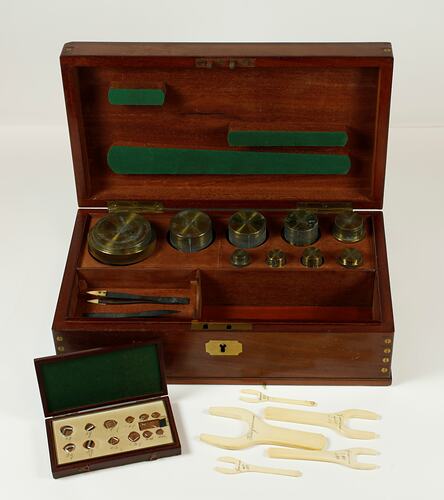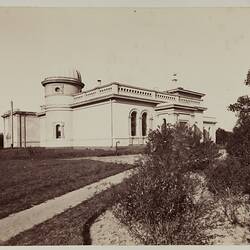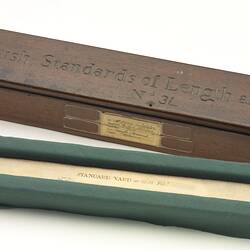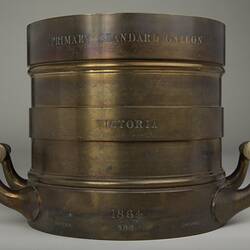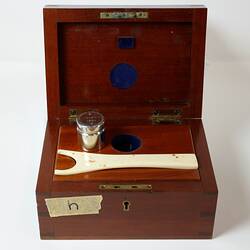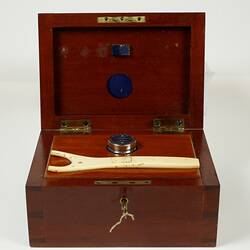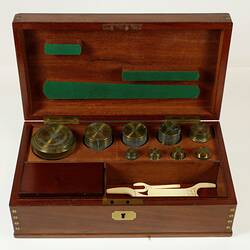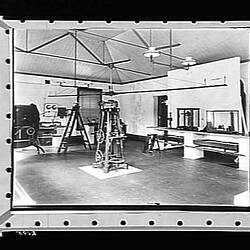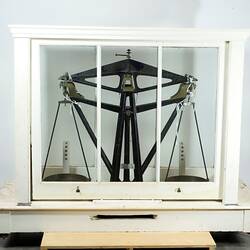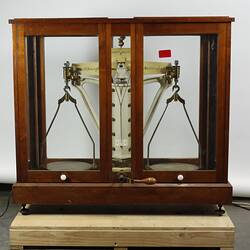From its inception the Melbourne Observatory had sets of standard weights and measures, which had been tested in Britain against the Imperial standards. These included the primary standard yard and pound for the Colony of Victoria. Other standards of weight and measure in the colony could be compared to these primary standards.
The measures were kept in the basement to reduce the effects of changes in temperature, but even so, special calculations had to be made to allow for the expansion and contraction of the metal in the standard yard. The standard yard was set up in a machine fitted with microscopes, so that exact comparisons could be made of two measures. In 1876 a permanent chain standard was erected in the Observatory grounds, to enable the ready testing of surveyor's and engineer's chain lengths.
A Weights & Measures Act was passed in Victoria in 1862, establishing local inspectors throughout the colony. By the 1870s, each local council and shire in Victoria held a set of standards that were used to test the scales, weights and measures used by factories and shops. Every ten years the councils' standards would themselves need to be rechecked against the Victorian standards.
This checking was done by the Victorian Customs Department in the 19th century, but with the transfer of responsibility for customs to the Federal Government in 1901, the weights and measures function was retained by the Victorian Government and shifted to the Melbourne Observatory. In 1904, a new building was erected at the south end of the Great Melbourne Telescope House, and the weights and measures and testing equipment installed on slate and granite benches. Because the large room had large whirling apparatus for testing air meters, it was always known as the Whirling Room.
When the Melbourne Observatory closed in 1944, the Weights and Measures Branch was formed to continue this area of the Observatory's work, and this branch remained at the Observatory site until 1995.
References:
Proctor, S.J. (1983). Weights and Measures in Victoria: A History and Survey, Glen Waverley: S.J. Proctor.
More Information
-
Keywords
-
Authors
-
Article types
